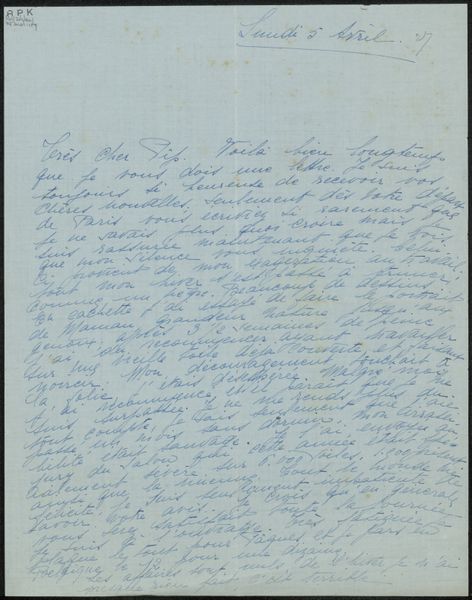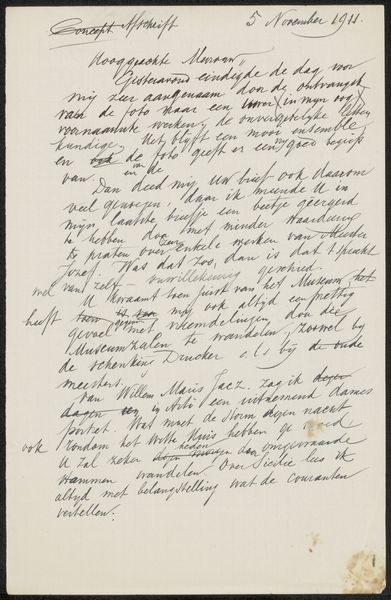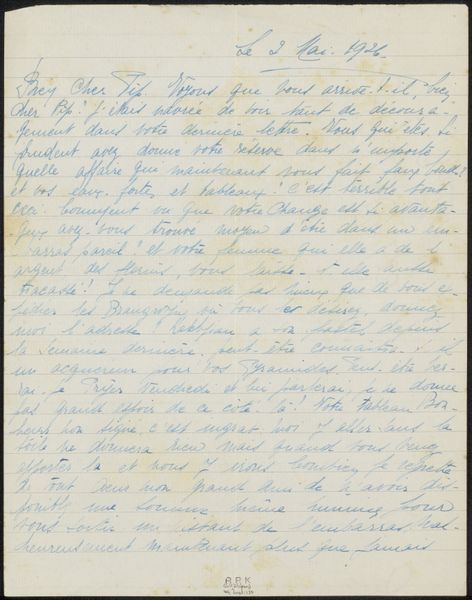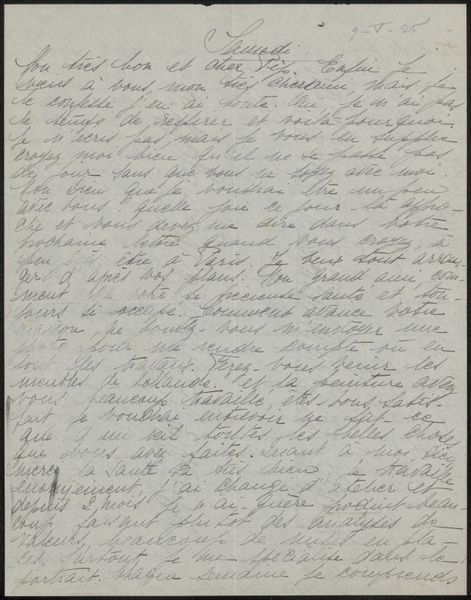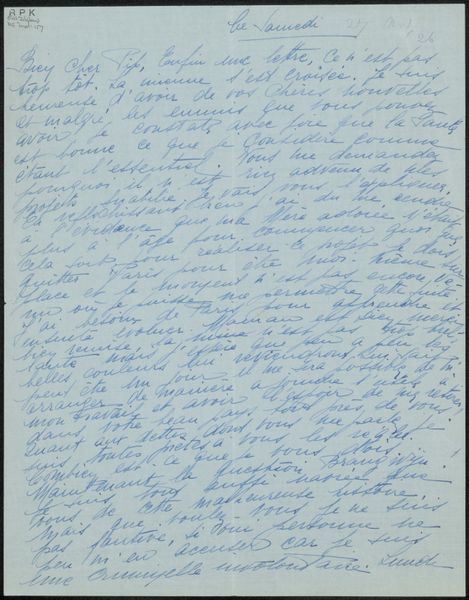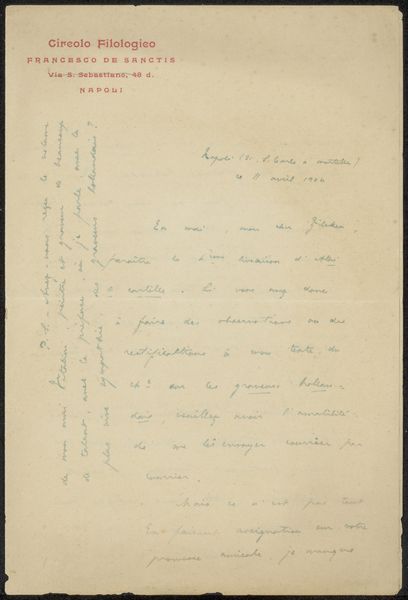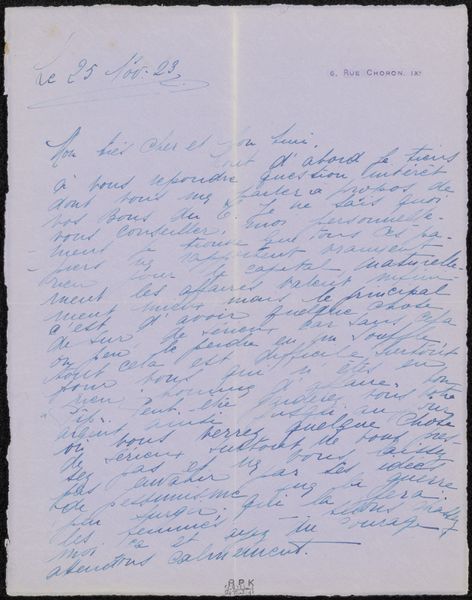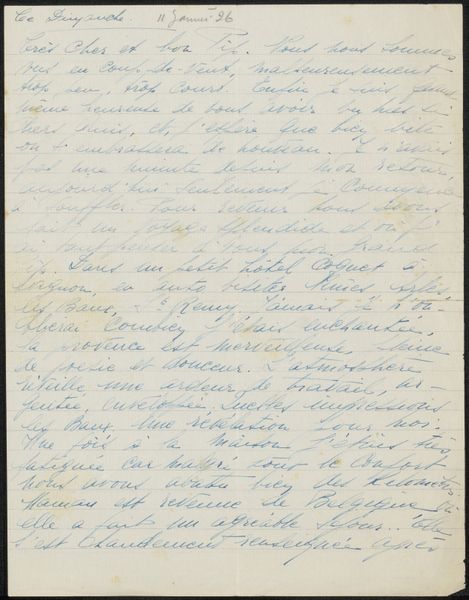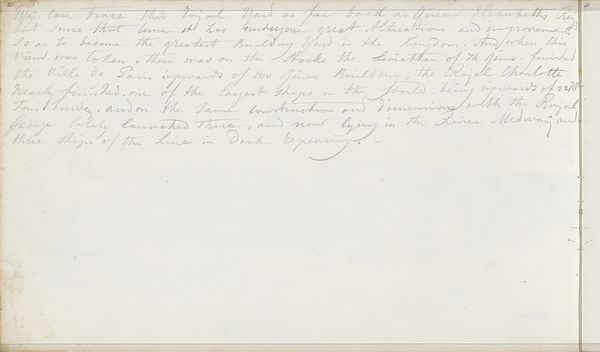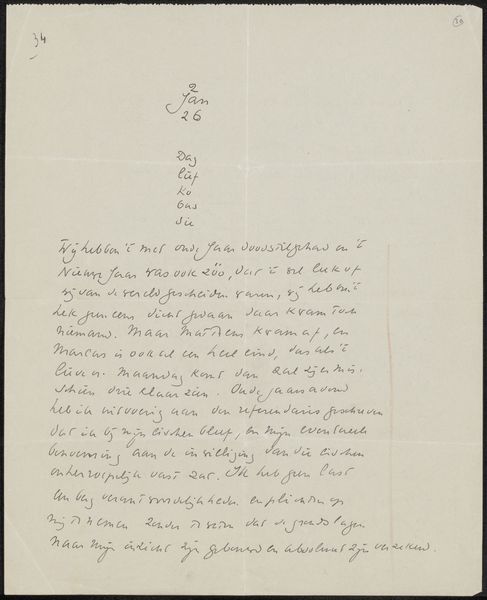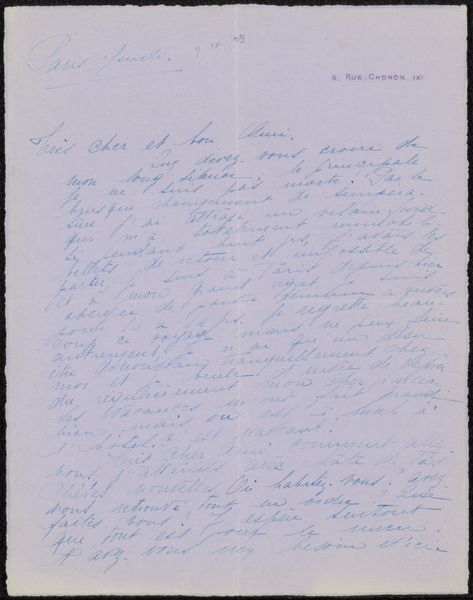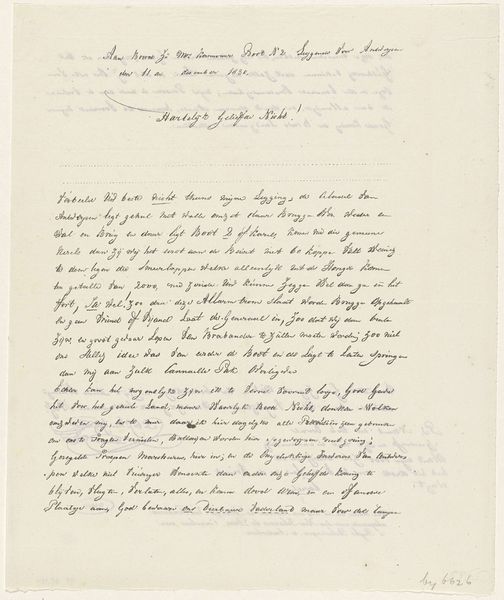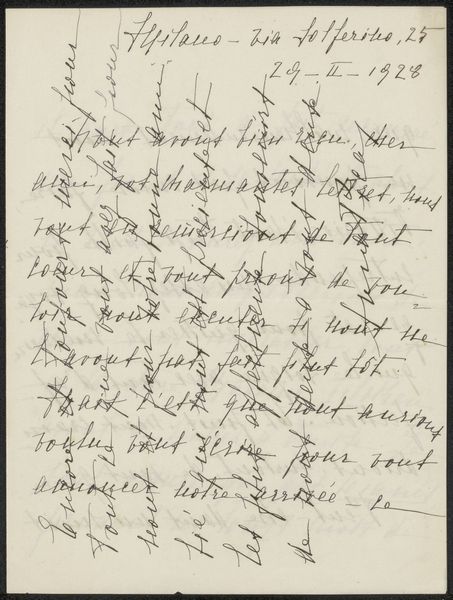
drawing, paper, photography, ink
#
drawing
#
paper
#
photography
#
ink
#
ink colored
#
calligraphy
Copyright: Rijks Museum: Open Domain
Curator: Before us, we have a letter—titled "Brief aan Philip Zilcken"— possibly dating back to 1896. It's presented as a drawing that combines photography, ink, and paper. What are your first impressions? Editor: My initial feeling is one of intimacy. The handwritten script, faded ink on lined paper—it feels very personal and fragile, like a whisper from the past. The precision is astounding considering that it is handmade. Curator: It is incredibly tactile, isn’t it? This piece is a testament to the materiality of communication. Back then, correspondence was an event—laborious and crafted with care. The quality of the paper, the consistency of the ink… each choice was deliberate and informed the message itself. Editor: Exactly! And think about the power dynamics at play here. Who was Philip Zilcken, and what was their relationship to the author, Vittorio Pica? The act of handwriting itself conveys a certain level of respect, a willingness to invest time and energy in conveying one's thoughts. Is it not about gender, class, privilege, perhaps even the state of Europe at the time? Curator: You raise a crucial point about gender, considering how male calligraphers were esteemed over women, who were often not taught or allowed the access to materials as was their counterpart. This links the artist, Pica, into these narratives and constraints regarding creation, labour and power that exist even now, with mass produced fonts being commonplace and accessible. Editor: Absolutely, calligraphy has to be seen as both artistic and cultural practice. And the photograph becomes more than just its representation, but a document of Pica's world that should inspire reflection on how artistic work can challenge us today! Curator: Indeed. It's easy to overlook the artistry in everyday acts like handwriting, but this piece reminds us of the thought and craftsmanship involved, while raising important social questions. Editor: Well said, it provides food for thought beyond aesthetic appreciation and challenges conventional narratives, doesn't it? Curator: Absolutely. Editor: Yes.
Comments
No comments
Be the first to comment and join the conversation on the ultimate creative platform.
